Tips for Wedding Invitations: Designing Your Perfect Invite
Planning a wedding is an exciting time, and one of the key elements is getting your invitations just right. Invitations set the tone for your big day, offering guests a sneak peek into the style and formality of your event. Understanding the essentials of wedding invitations will ensure your special day starts off on the right foot.
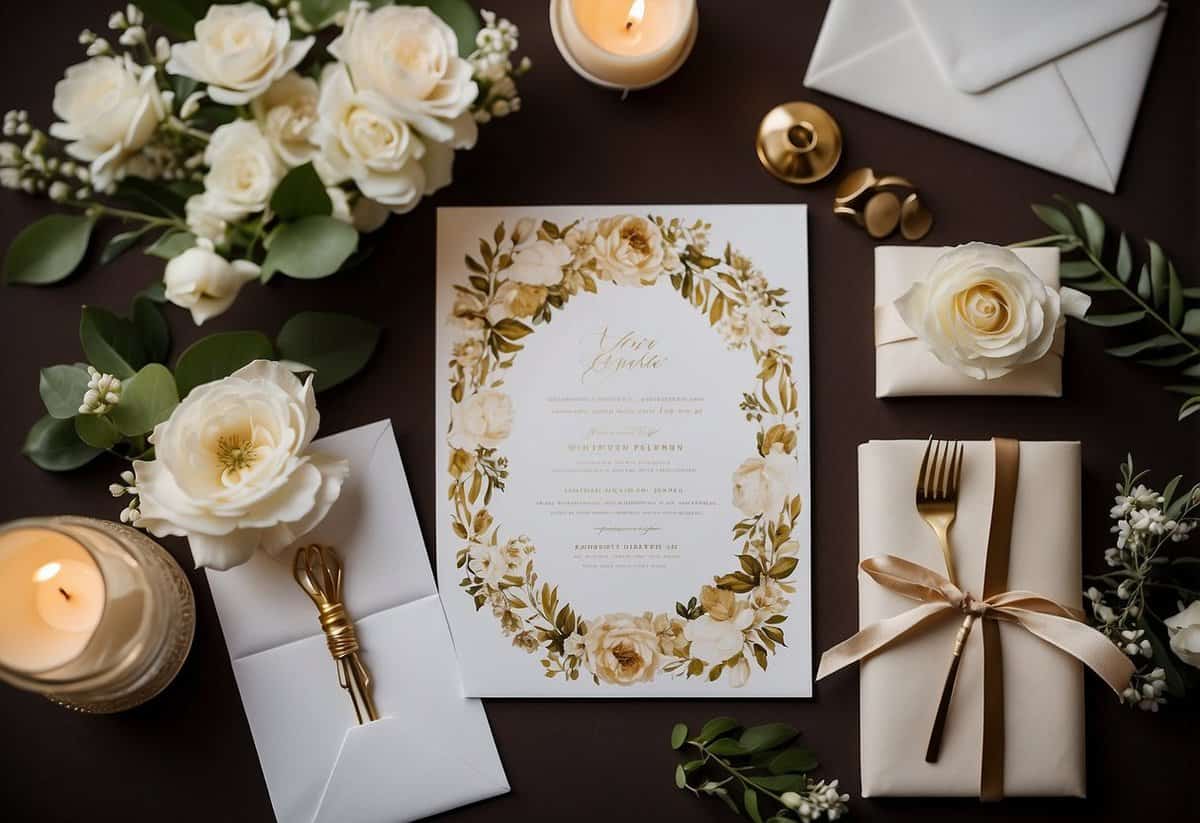
Whether you’re hosting a grand celebration or an intimate gathering, the way you present your invitations says a lot about your wedding. From selecting the perfect design to ensuring proper etiquette, there’s a lot to consider. With a few simple tips, you can create invitations that reflect the joy and uniqueness of your upcoming wedding.
1) Choose a Coordinating Color Scheme
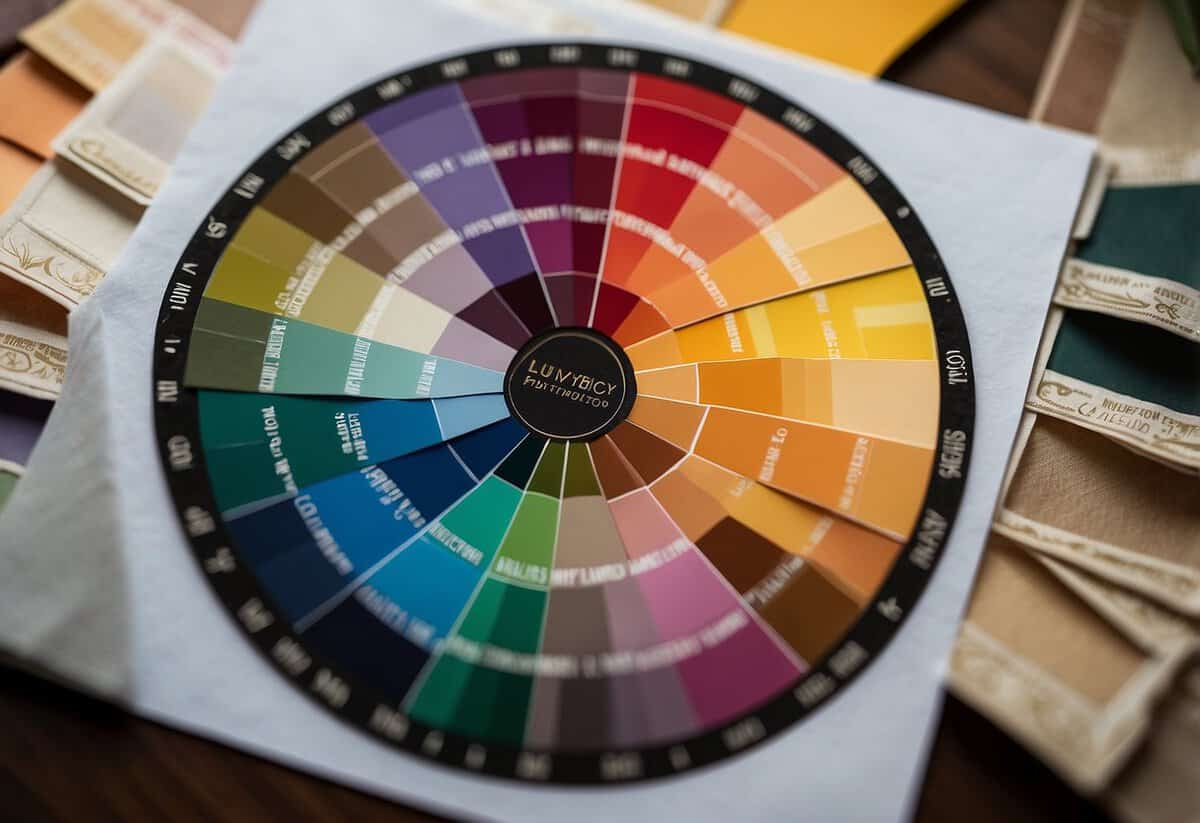
Choosing a color scheme for your wedding invitations is important. It’s the first glimpse guests will get of your big day. By matching your invitations to your overall color palette, you create a cohesive look.
Think about the season of your wedding. Soft pastels might work well for spring, while rich, deep colors are great for winter.
Consider your wedding theme. For example, a mix of pale blue and silver gives a celestial vibe. Peach and black pearl tones offer a chic twist for a classic look.
Pay attention to how the colors make you feel. Choose shades that you love and that reflect the mood you want to set. Whether it’s bright and cheerful or elegant and sophisticated, your invitations will set the tone for your wedding day.
2) Incorporate Personalized Elements

Adding personalized touches to your wedding invitations makes them special. Start by including your names and wedding date in a unique way, such as with custom typography or monograms.
Consider including a piece of your love story. This could be a brief timeline of your relationship or a favorite quote that means a lot to both of you.
Photos can add a personal touch too. You might want to include an engagement photo or a snapshot from a memorable trip together.
Think about using custom illustrations or motifs that reflect your hobbies or shared interests. For example, if you both love traveling, you could include a small map or travel-themed icons.
Personalized details not only make your invitations unique but also give your guests a glimpse into your relationship and what makes it special.
3) Select high-quality paper
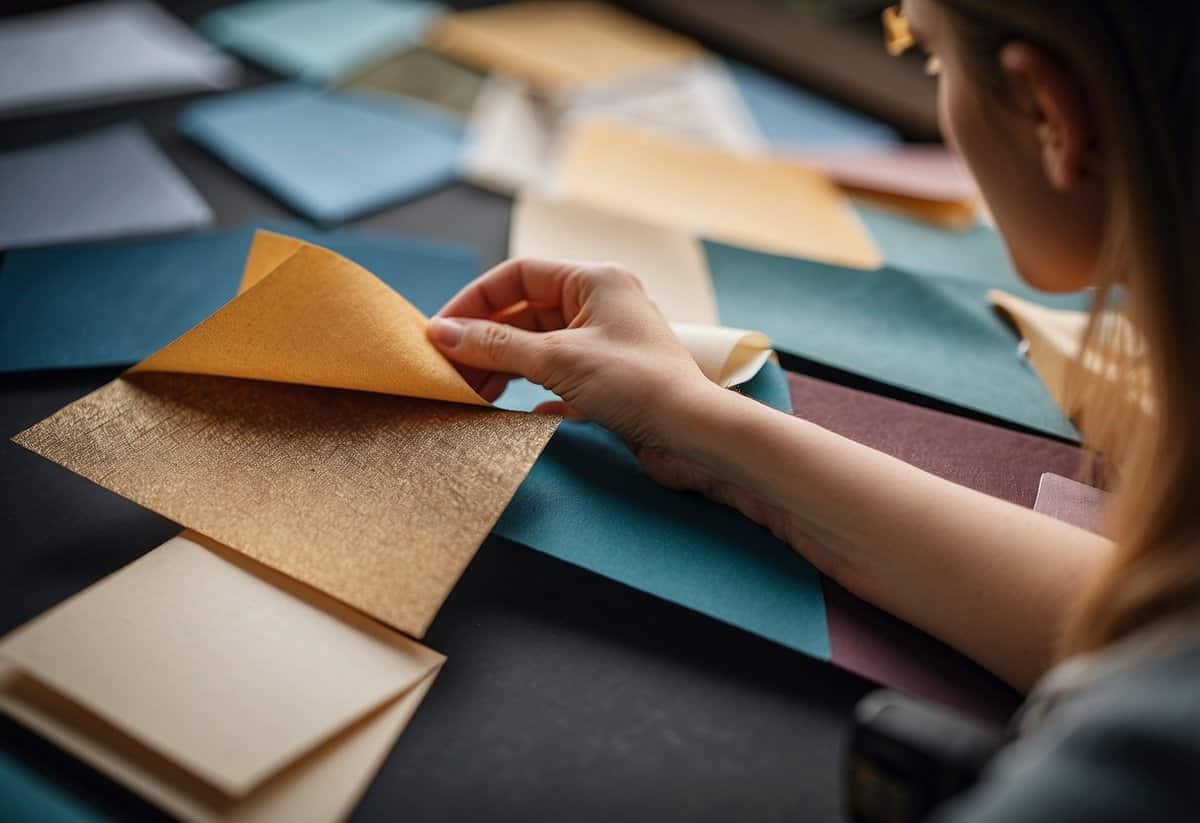
Choosing high-quality paper can make your wedding invitations look and feel more special. Thicker cardstock often gives a more elegant touch, and it’s great for custom printing at home.
Consider the cardstock weight. Around 80-90 pounds (lb) works well for most home printers, giving a sturdy feel without being too heavy.
For an eco-friendly option, recycled paper is a wonderful choice. Look for FSC-certified paper made using sustainable methods. This kind of paper often has a nice matte finish and can be quite thick, which adds a lovely texture.
Rustic styles like kraft or wood-grain paper can add personality to your invitations, contrasted with more formal options like parchment or vellum. Each type has its own charm, so choose according to the theme and tone of your wedding.
4) Include an RSVP card
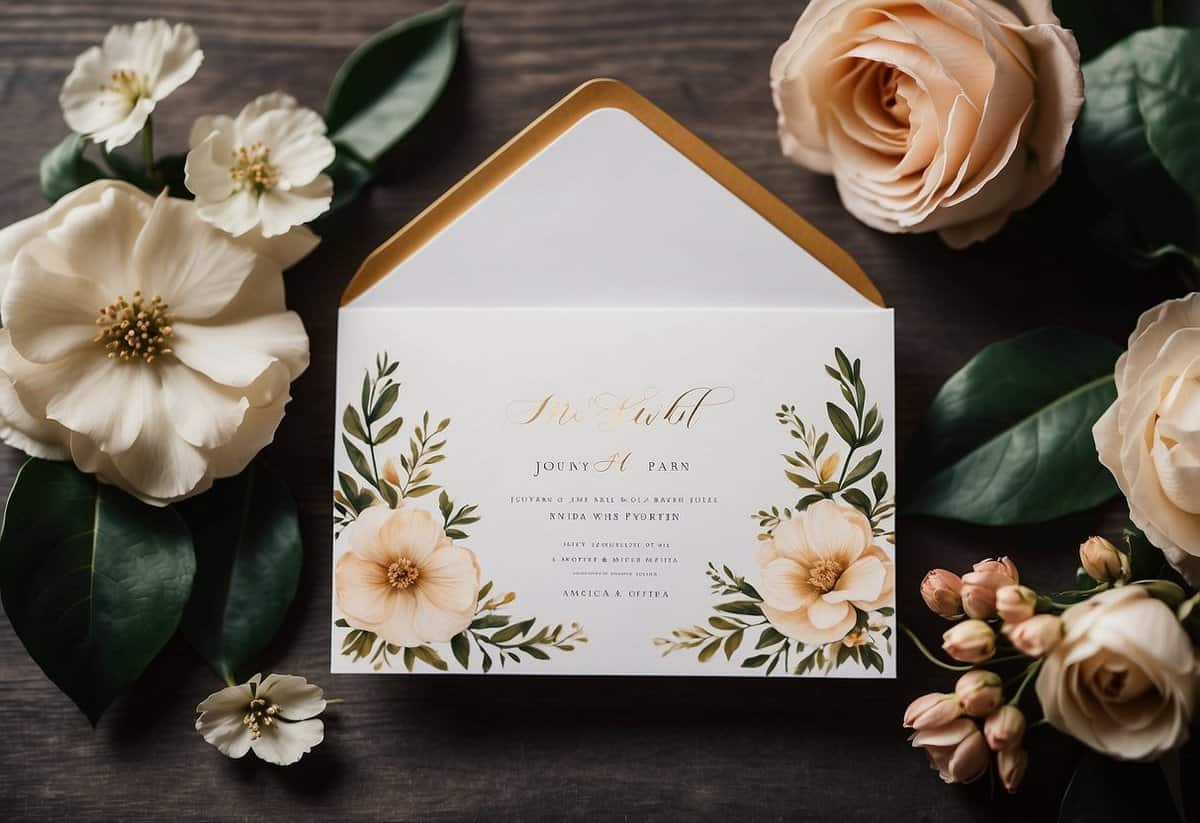
Including an RSVP card with your wedding invitation is a must. It helps you know who will be attending and ensures you have an accurate headcount for the big day.
On the RSVP card, provide a blank line where guests can write their names. Add checkboxes for “Attending” or “Not Attending.”
If you are offering meal options, list these on the card. This way, guests can indicate their choices. You can also include a line to ask about dietary restrictions.
Set a clear deadline for guests to RSVP. A good rule of thumb is to ask for responses about a month before the wedding.
Optional details can be added too. You might include a space for song requests or a note about dress code.
5) Provide detailed event information
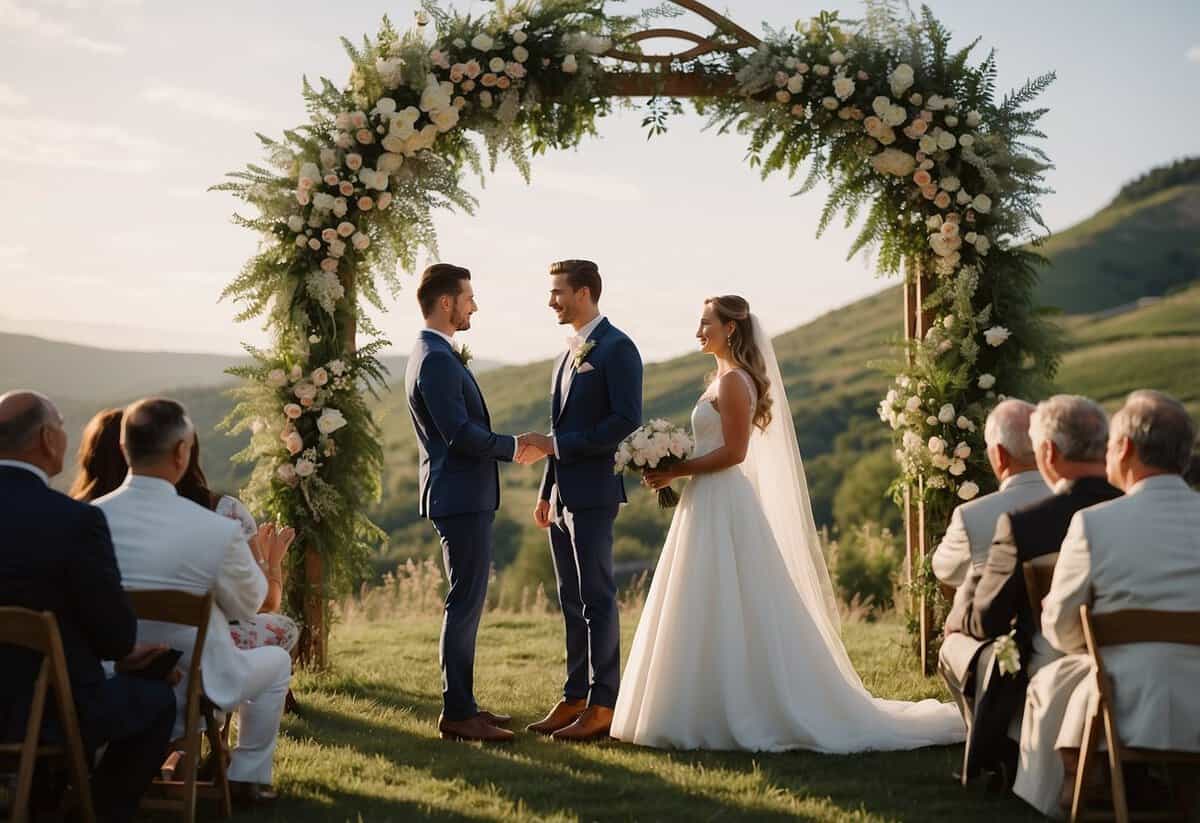
Make sure your guests have clear details about your wedding events. Include the date, time, and location of each part of the celebration.
If your ceremony and reception are at the same venue, add a line like “Reception to Follow.”
If the reception is at a different location, include a separate card with the address and start time.
Provide information about the dress code. This helps your guests know how to dress appropriately.
If you have a wedding website, mention it. Guests can find more information there, including travel details and hotel accommodations.
Clear and detailed event information helps keep everyone on the same page and ensures a smooth celebration.
6) Consider a themed design
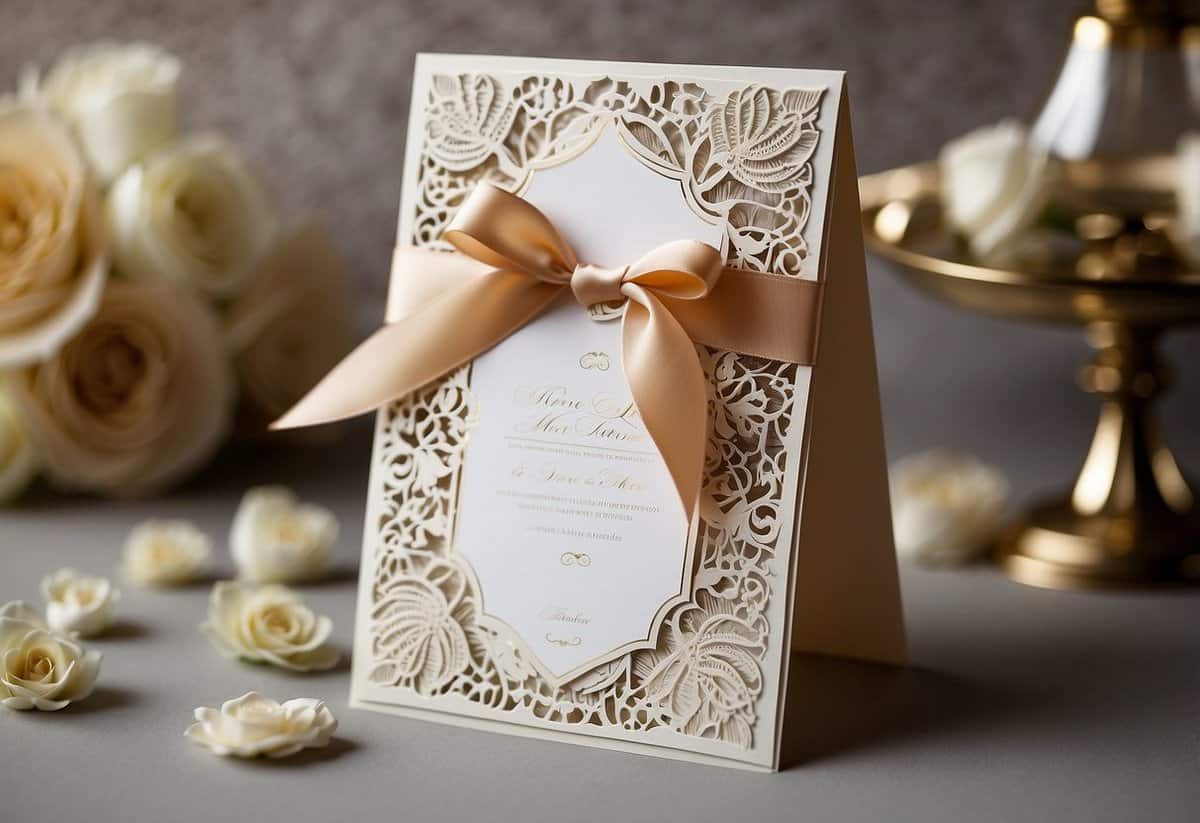
Picking a themed design for your wedding invitations adds a special touch. It reflects your wedding style and personality.
If you’re having a beach wedding, use soft blues and seashell motifs. For a vintage theme, think lace patterns and old-school fonts.
Seasonal themes are also a great option. Winter weddings can feature snowflakes and cozy colors, while spring invites might show off floral designs.
Choosing a theme helps tie all your decorations together. It makes your invitations stand out and gives your guests a sneak peek into your special day.
7) Double-check All Information
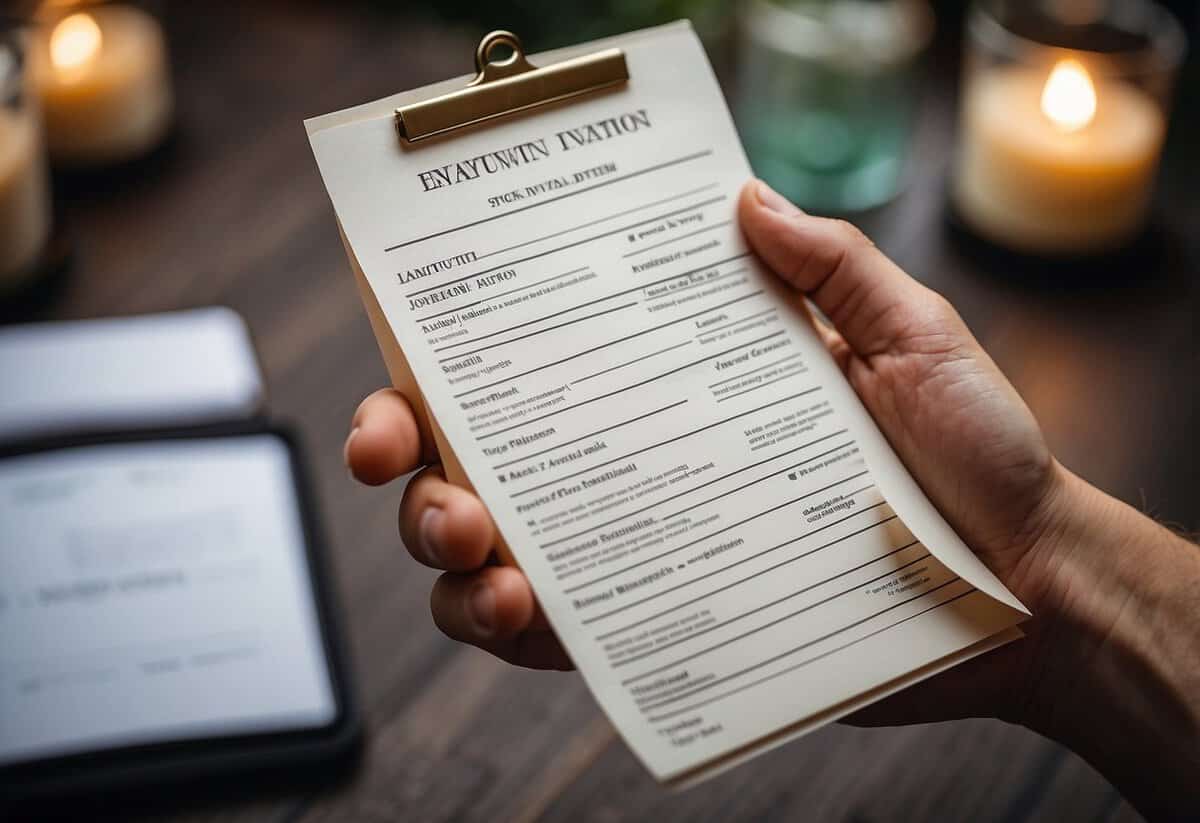
It’s crucial to double-check every detail on your wedding invitations. This includes names, dates, locations, and times.
Ask several people to review the information. Your partner, a family member, and a friend can help catch any errors.
Triple-check the proof from the stationer before printing. Ensuring accuracy prevents mistakes and confusion for your guests.
8) Add a location map or directions

Including a map or directions in your wedding invitation is very helpful for guests, especially those coming from out of town. A map ensures everyone knows how to get to your ceremony and reception.
You can use Google Maps to create a custom map. This can be shared with your guests by copying the desired map link and pasting it into your invitation.
For a personal touch, consider creating a printed map. Use free clipart for icons like a chapel or wedding bells to mark key locations. You can add these graphics to a map using tools like PowerPoint.
Another option is using online map makers like MapQuest. Input your addresses, choose the map scale, and print out the final version. Don’t forget to include written directions alongside the map to ensure guests can navigate smoothly.
9) Choose a readable font
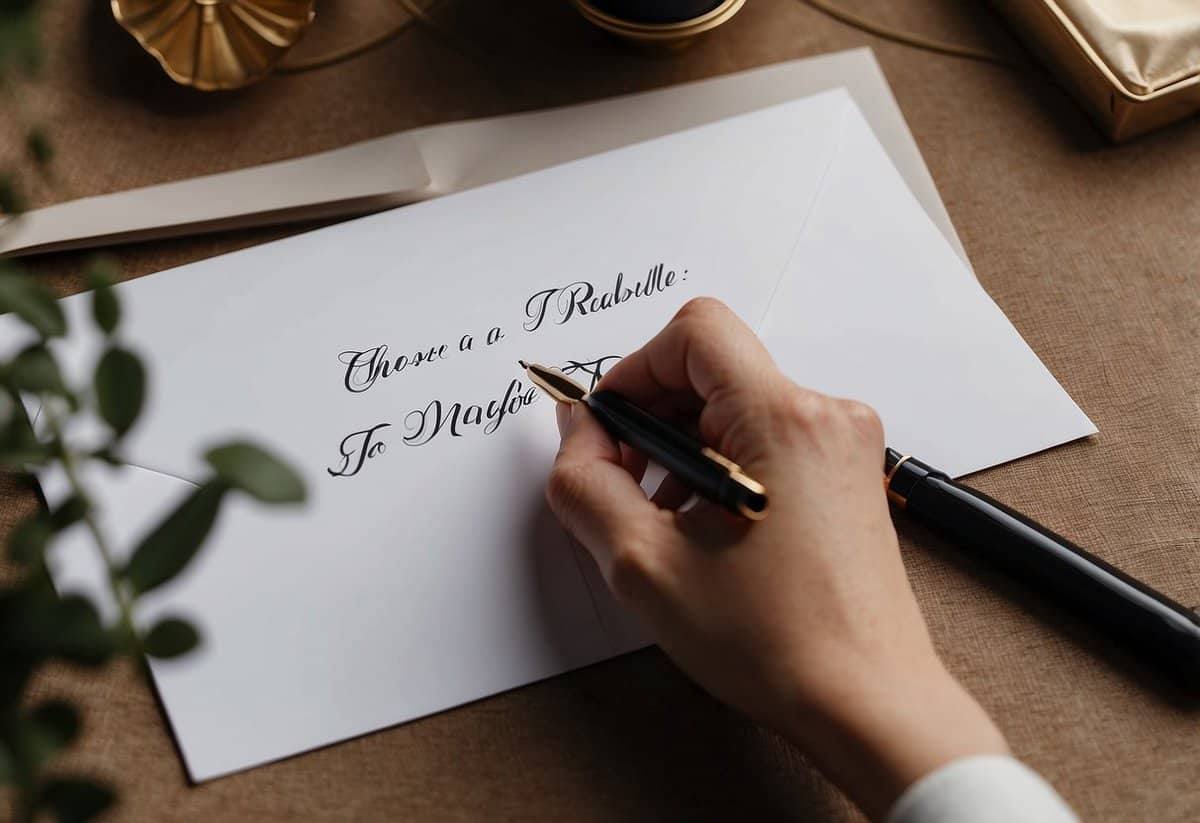
When picking a font for your wedding invitations, readability is key.
Stick to one or, at most, two fonts. Too many fonts can make the text look cluttered and hard to read.
Consider using a script or decorative font for the names and a simpler font for the details. This helps important information stand out without being overwhelming.
Make sure the font size is large enough to read easily. Small, fancy fonts may look nice but can be difficult for guests to read, especially older guests.
Keep consistency throughout your invitation. Using a consistent style helps keep the design clean and cohesive.
Try out different fonts with your text before making a final decision. Seeing your names and details in various fonts can help you choose the best one.
Remember, readability will make your invitations both beautiful and practical.
10) Include accommodation details for guests
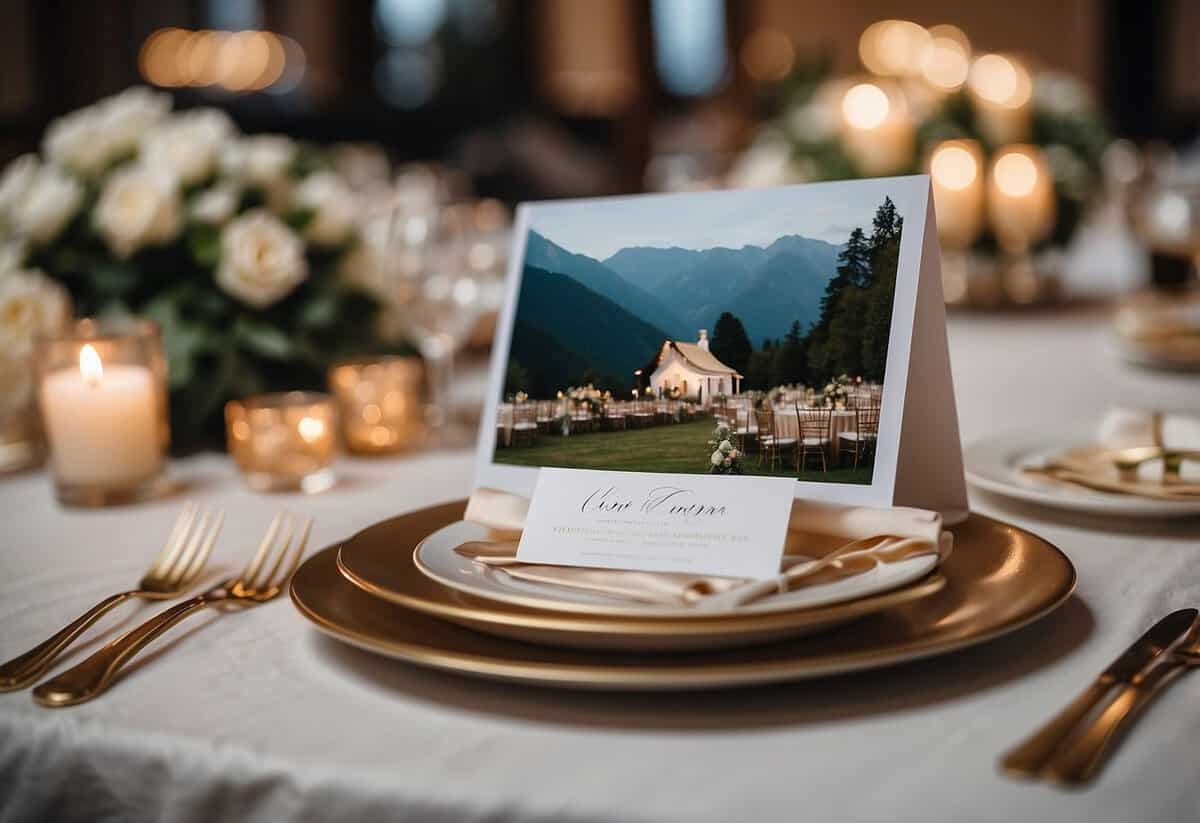
Your wedding day is special, and you want your guests to feel comfortable. Including accommodation details in your invitations helps them plan their stay easily.
Start by listing recommended hotels close to your venue. Include addresses and phone numbers. If you’ve reserved a block of rooms at discounted rates, mention it.
Add information about any transportation you’ve arranged. Shuttle services from hotels to the venue are a nice touch.
Include your wedding website link. It’s helpful for guests to find more details and updates in one place.
Keep the tone friendly and straightforward. This makes it easy for everyone to understand the important details.
Crafting The Perfect Wedding Invitation
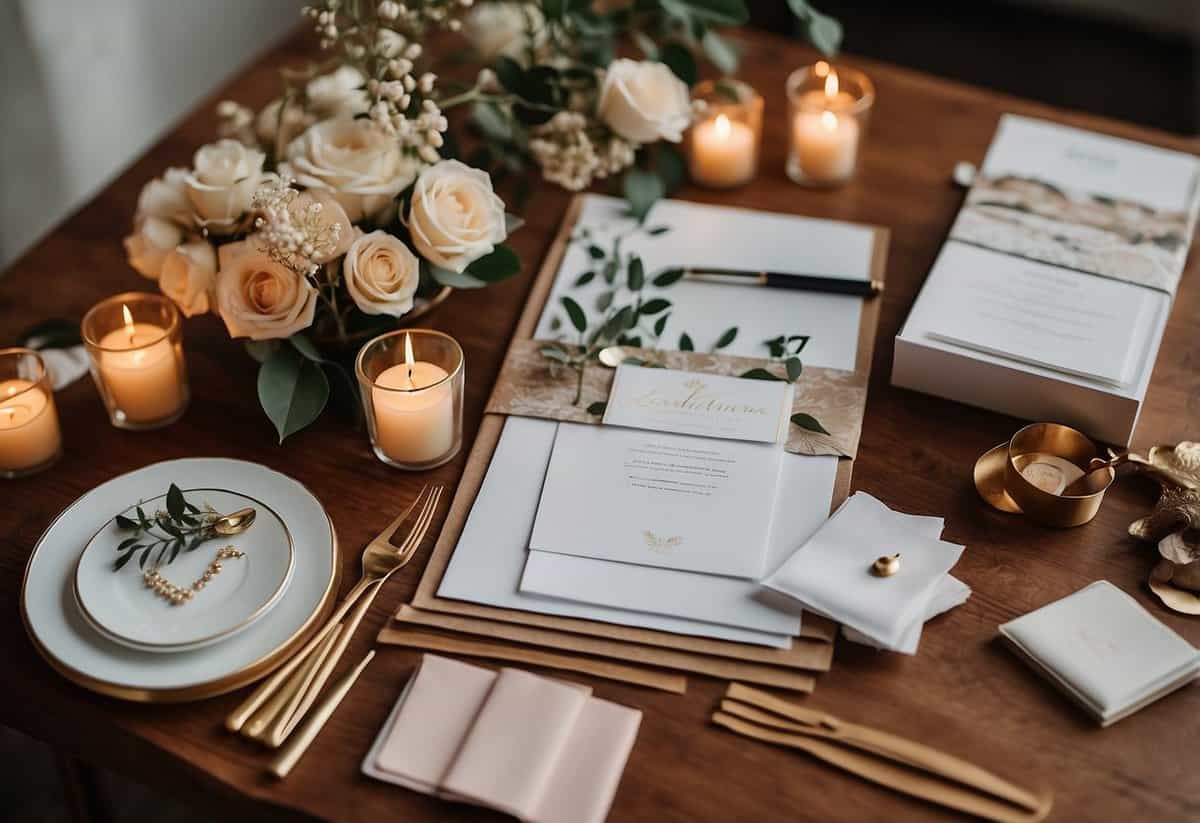
Creating the perfect wedding invitation involves choosing the right paper, selecting fitting fonts and colors, and adding personal touches that reflect your love story.
Choosing The Right Paper
Start by selecting paper that suits your wedding theme and feels good to the touch. Popular choices include cotton, recycled paper, and vellum. Cotton is elegant and durable, while recycled options are eco-friendly. Vellum can add a touch of transparency and sophistication.
Consider the weight and texture. Heavier paper often feels more luxurious. Think about finishes like matte, glossy, or textured to match your style.
Remember, your choice of paper will set the tone for your event and leave a lasting impression on your guests.
Selecting Fonts And Colors
The fonts and colors you choose should reflect the mood and style of your wedding. Classic serif fonts like Times New Roman or Garamond are timeless and elegant. For a modern touch, sans-serif fonts like Helvetica or Arial work well. You can also mix fonts to create contrast but keep it to two or three different styles to avoid clutter.
When it comes to colors, align them with your wedding palette. Soft, pastel shades convey romance, while bold colors can express a more lively atmosphere. Make sure the text color contrasts well with the background for readability.
Adding Personal Touches
Add elements that make your invitation unique. This could include a custom monogram, a quote that means a lot to both of you, or even a small hand-drawn illustration. You might also add a timeline of your relationship milestones on the back.
Consider using envelope liners with patterns or colors that match your theme. Handwriting a small note inside each invitation can make it extra personal.
Every detail you include should reflect your personalities and give a hint of the celebration to come.
Wording Your Wedding Invitations

Choosing the right words for your wedding invitations sets the tone for your big day. From deciding between formal and informal language to including all necessary details, every choice matters.
Formal Vs. Informal Wording
When selecting the tone of your wedding invitations, consider your wedding style. Formal wording uses traditional phrases such as “The honor of your presence is requested,” often spelling out times and dates.
Informal wording is more relaxed, using phrases like “We’d love for you to join us” and allowing for casual language and abbreviations. Formal invites often reflect a more classic, traditional event, while informal ones set a casual, laid-back vibe.
Here’s an example to illustrate:
- Formal: “Mr. and Mrs. John Smith request the honor of your presence at the marriage of their daughter.”
- Informal: “Join us to celebrate the wedding of Jane and Mike.”
Including Essential Details
Your wedding invitation must clearly state crucial details to avoid confusion. Include the names of the hosts, the couple, the date and time, and the location of the ceremony.
Remember to spell out everything, even the time and date, for formal invites: “Saturday, the fifteenth of June, Two thousand twenty-four, at four o’clock in the afternoon.”
For both formal and informal invites, it’s helpful to add an RSVP section. This can be done with a separate card or a simple line at the bottom of the invite, such as “Please RSVP by May 15.”
Insert cards can provide additional info like directions, dress code, or your wedding website. Keeping your guests well-informed ensures everyone is on the same page for your special day.







